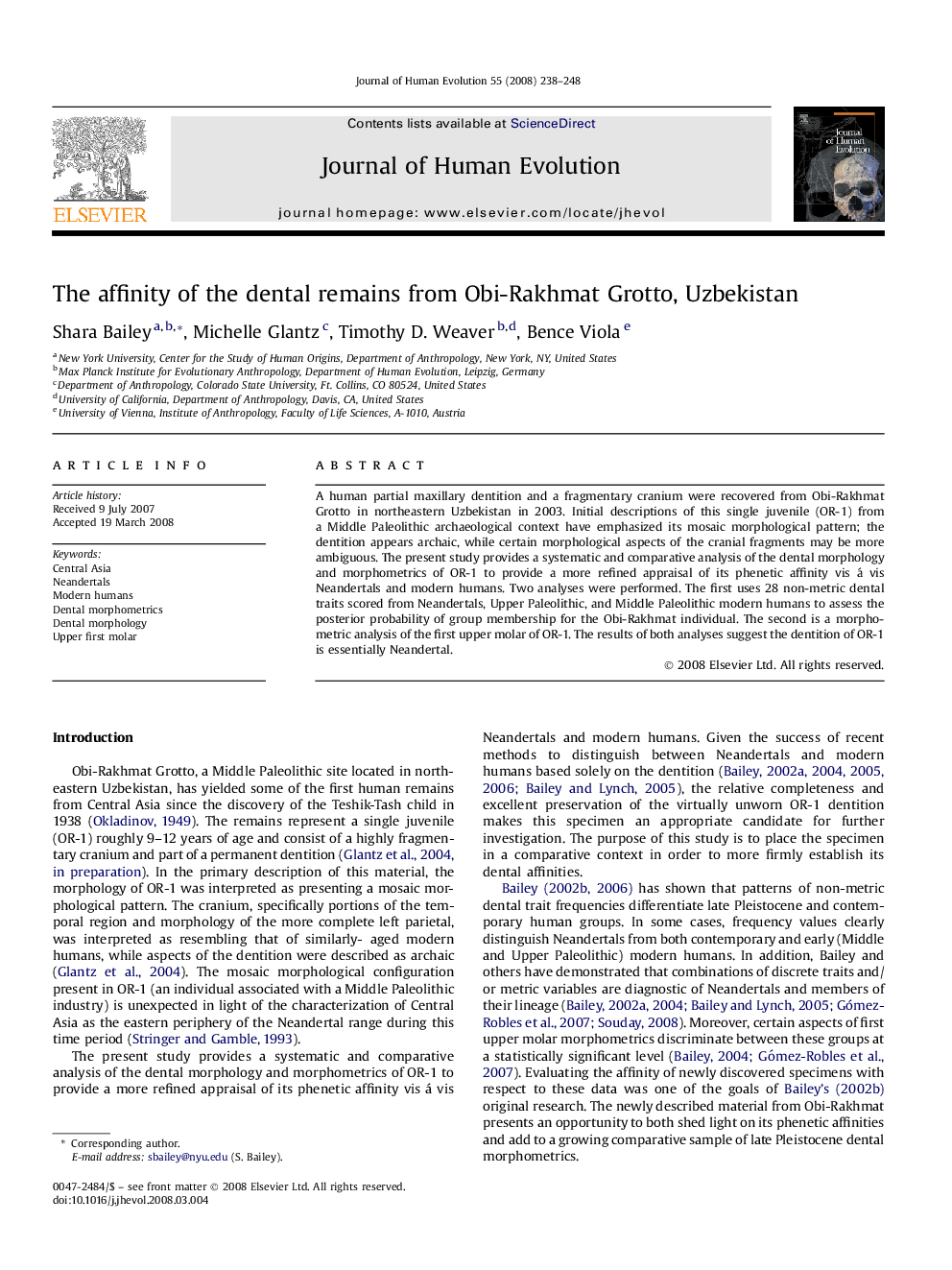| Article ID | Journal | Published Year | Pages | File Type |
|---|---|---|---|---|
| 4557293 | Journal of Human Evolution | 2008 | 11 Pages |
A human partial maxillary dentition and a fragmentary cranium were recovered from Obi-Rakhmat Grotto in northeastern Uzbekistan in 2003. Initial descriptions of this single juvenile (OR-1) from a Middle Paleolithic archaeological context have emphasized its mosaic morphological pattern; the dentition appears archaic, while certain morphological aspects of the cranial fragments may be more ambiguous. The present study provides a systematic and comparative analysis of the dental morphology and morphometrics of OR-1 to provide a more refined appraisal of its phenetic affinity vis á vis Neandertals and modern humans. Two analyses were performed. The first uses 28 non-metric dental traits scored from Neandertals, Upper Paleolithic, and Middle Paleolithic modern humans to assess the posterior probability of group membership for the Obi-Rakhmat individual. The second is a morphometric analysis of the first upper molar of OR-1. The results of both analyses suggest the dentition of OR-1 is essentially Neandertal.
